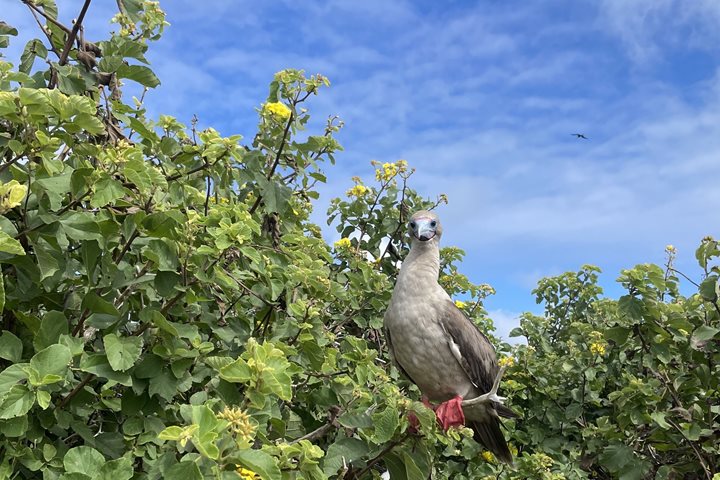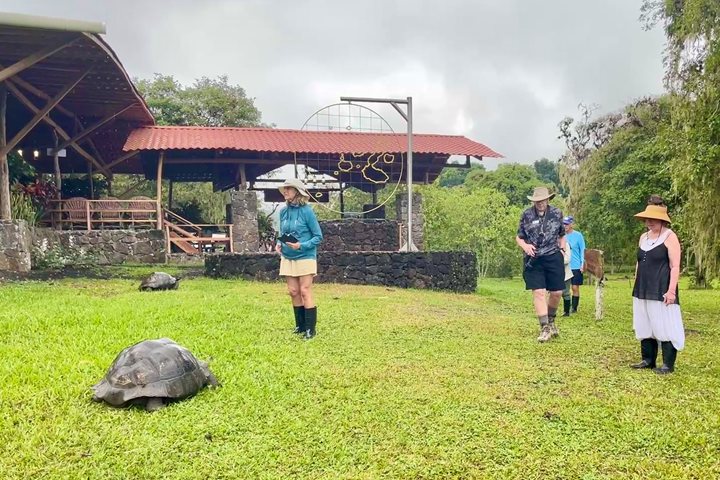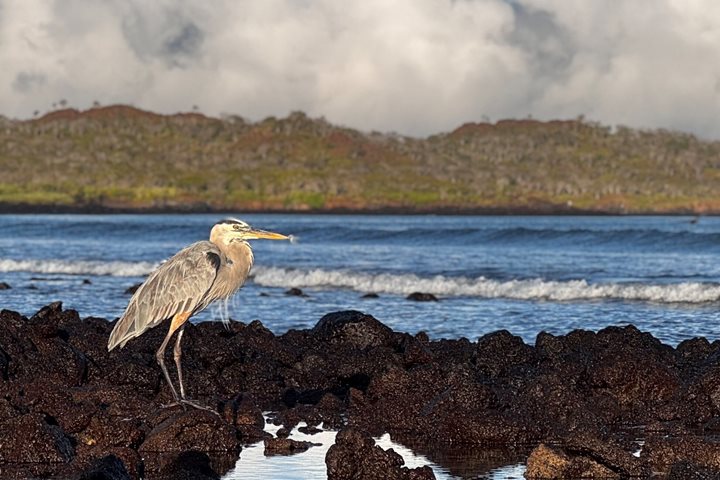Today we explored two small islands full of wildlife and radiant colors. In the morning, we explored North Seymour, a 0.73 sq mi island that hosts a colony of frigatebirds. As soon as we landed, we observed swallow-tailed gulls nesting. These photogenic birds are endemic to the Galapagos. They nest all year on the islands, so it’s quite common to find nests, chicks, and eggs along the rocky shores. We observed land iguanas, which are not native to North Seymour. They were introduced by an American captain named Allan Hancock in the 1930s. Although the island is dry, the iguanas survive and reproduce here today. It was a great day spent exploring the islands!
5/29/2025
Read
National Geographic Gemini
Genovesa Island
Genovesa is considered one of the Galapagos crown jewels, and today it was showing off all of its splendor. Immediately after breakfast we put on our sturdy shoes and set out to explore Prince Philip’s Steps. This area is known for opportunities to observe not only large colonies of nesting Nazca and red-footed boobies, but maybe, just maybe, the short-eared owl which exhibits diurnal behavior on this island. After this walk we got ready for a dip in the Pacific Ocean and snorkeling along the inner coast of this caldera. The afternoon was equally amazing as we disembarked to explore Darwin Bay, along a short and easy trail that was packed with wildlife. Here we observed not only nesting frigatebirds, red-footed boobies, and Nazca boobies, but also a few yellow-crowned night herons. It was another incredible afternoon in the Galapagos Islands.







